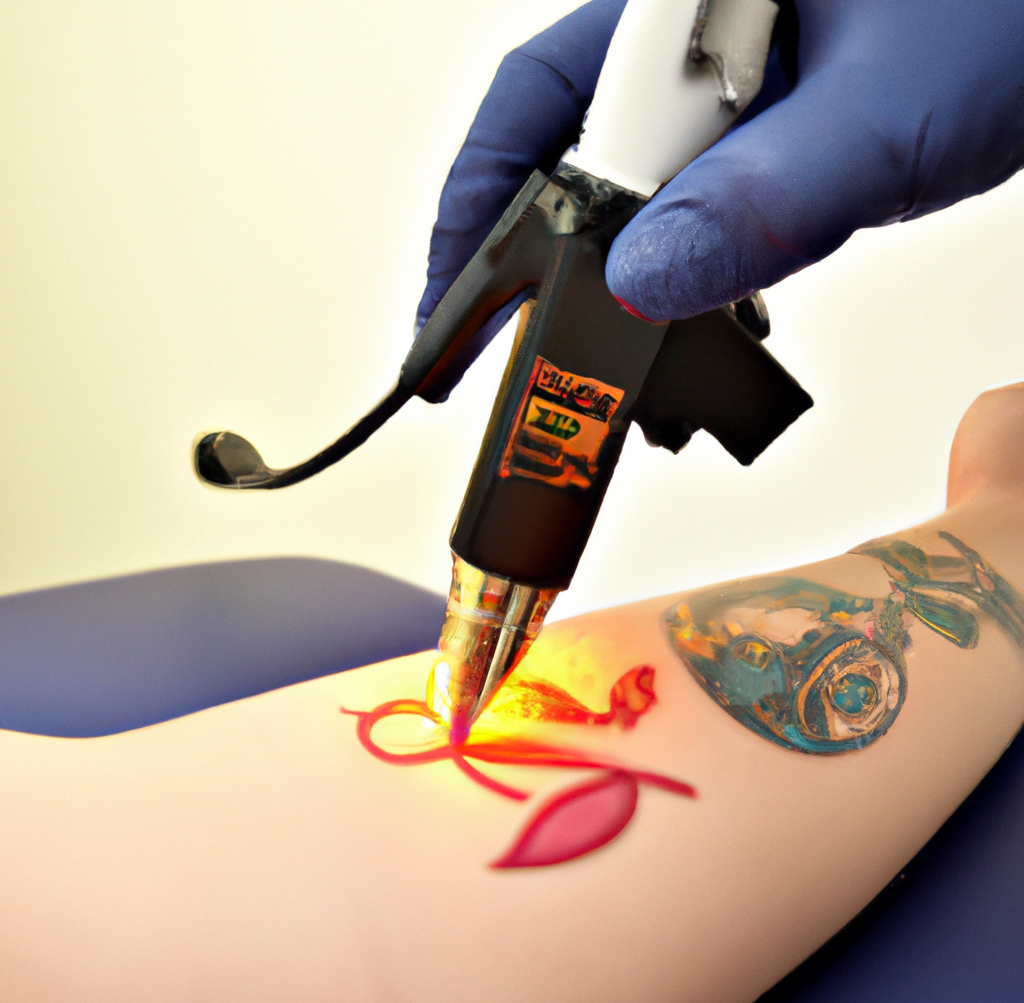Laser Tattoo Removal is a safe and effective way to remove unwanted tattoos. Using state-of-the-art laser technology, our trained professionals can target the ink particles in the tattoo, breaking them up and allowing the body to naturally remove them.
The treatment is relatively painless and can be completed in a series of sessions, depending on the size, color, and location of the tattoo.
Our laser technology is designed to be highly effective on a wide range of tattoo colors, including difficult-to-remove colors like greens and blues.
How does it work?
Laser tattoo removal works by using high-energy laser beams to break up the ink particles in the tattoo. The laser emits light in a specific wavelength that targets the pigment in the tattoo, shattering it into small pieces. The body’s natural healing process then removes these tiny ink particles over time.
The laser emits short pulses of energy in the form of light, which pass through the top layers of the skin and are absorbed by the tattoo ink. The energy from the laser causes the ink particles to heat up and break down into tiny fragments, which are then carried away by the body’s immune system.
Different colors of ink absorb different wavelengths of light, so different lasers are used to target different colors of ink. For example, black and dark blue inks are typically removed with a Q-switched Nd:YAG laser, while lighter colors such as yellow, orange, and green are removed with a Q-switched Alexandrite laser.
How does it feel?
During the treatment, the laser is directed at the tattoo, and the patient may feel a slight stinging sensation, similar to a rubber band snapping on the skin. A cooling device is usually used to minimize discomfort. The treatment usually lasts between a few minutes to an hour, depending on the size and location of the tattoo.
How many treatments do you need?
The number of treatments required depends on several factors, including the size, color, location, and age of the tattoo, as well as the patient’s skin type and overall health.
Typically, small and simple tattoos can be removed in as few as 2-4 sessions, while larger, more complex tattoos may require 6-10 or more treatments. The color of the tattoo also plays a role in the number of treatments required, as certain colors such as red, orange, and yellow are harder to remove than darker colors like black and blue.
In general, professional tattoos tend to be harder to remove than amateur tattoos, as the ink is typically deeper and more densely packed. Additionally, newer tattoos are usually easier to remove than older tattoos, as the ink particles tend to be larger in older tattoos, making them more difficult to break up.
What are some post-care requirements to expect?
The specific post-care instructions will vary depending on the treatment and the patient’s individual needs, but some general guidelines include:
- Keep the treated area clean and dry: The tattooed area should be washed with a mild soap and water and dried thoroughly. Avoid soaking the area in water, such as taking a bath or swimming, for at least 24-48 hours after treatment.
- Apply a cold compress: To reduce pain and swelling, apply a cold compress to the treated area for 10-15 minutes at a time, several times a day.
- Avoid sun exposure: It’s important to avoid sun exposure on the treated area for at least 2 weeks, as UV radiation can cause the skin to heal more slowly and increase the risk of complications.
- Avoid picking or scratching the treated area: The treated area may become itchy or irritated, but it is important not to scratch or pick at the scab or crust that forms on the skin.
- Avoid certain products: Avoid using products containing benzoyl peroxide, salicylic acid, or retinoids on the treated area for at least 2 weeks, as these can cause a skin reaction and slow down healing.
- Wear sunscreen: After the treatment, it’s important to use a sunscreen with an SPF of at least 30 to protect the treated area from sun damage.
- Follow-up appointments: The professional will schedule the next treatment session depending on how the skin is healing and how much ink is still in the skin.
It’s important to follow the post-care instructions to ensure the best possible results and minimize the risk of complications.





